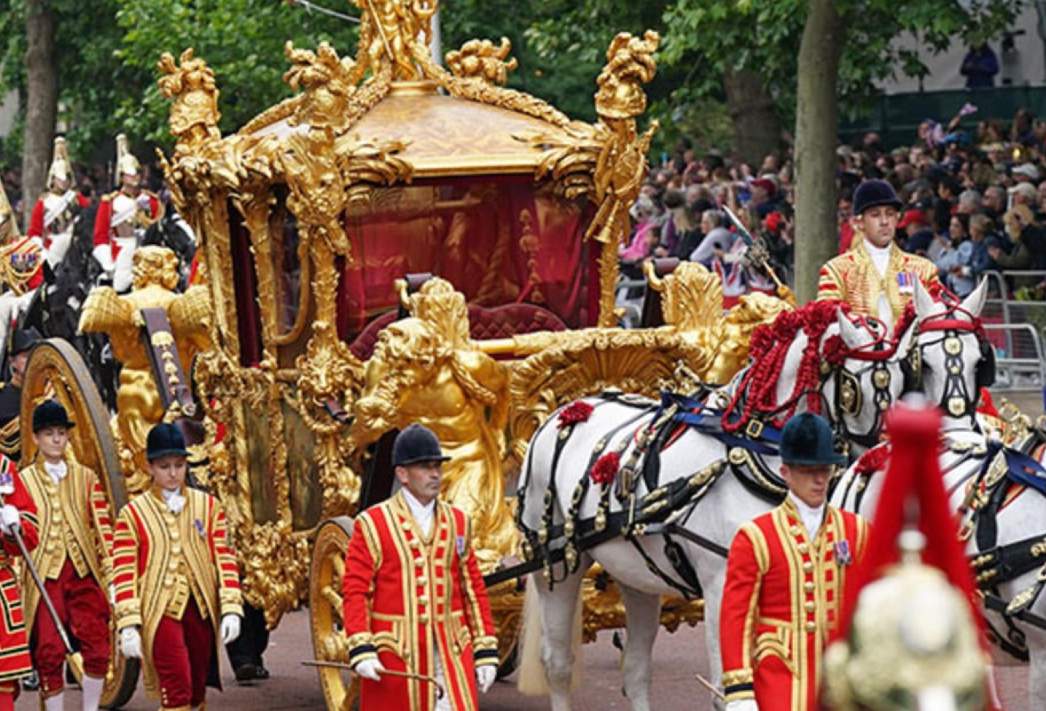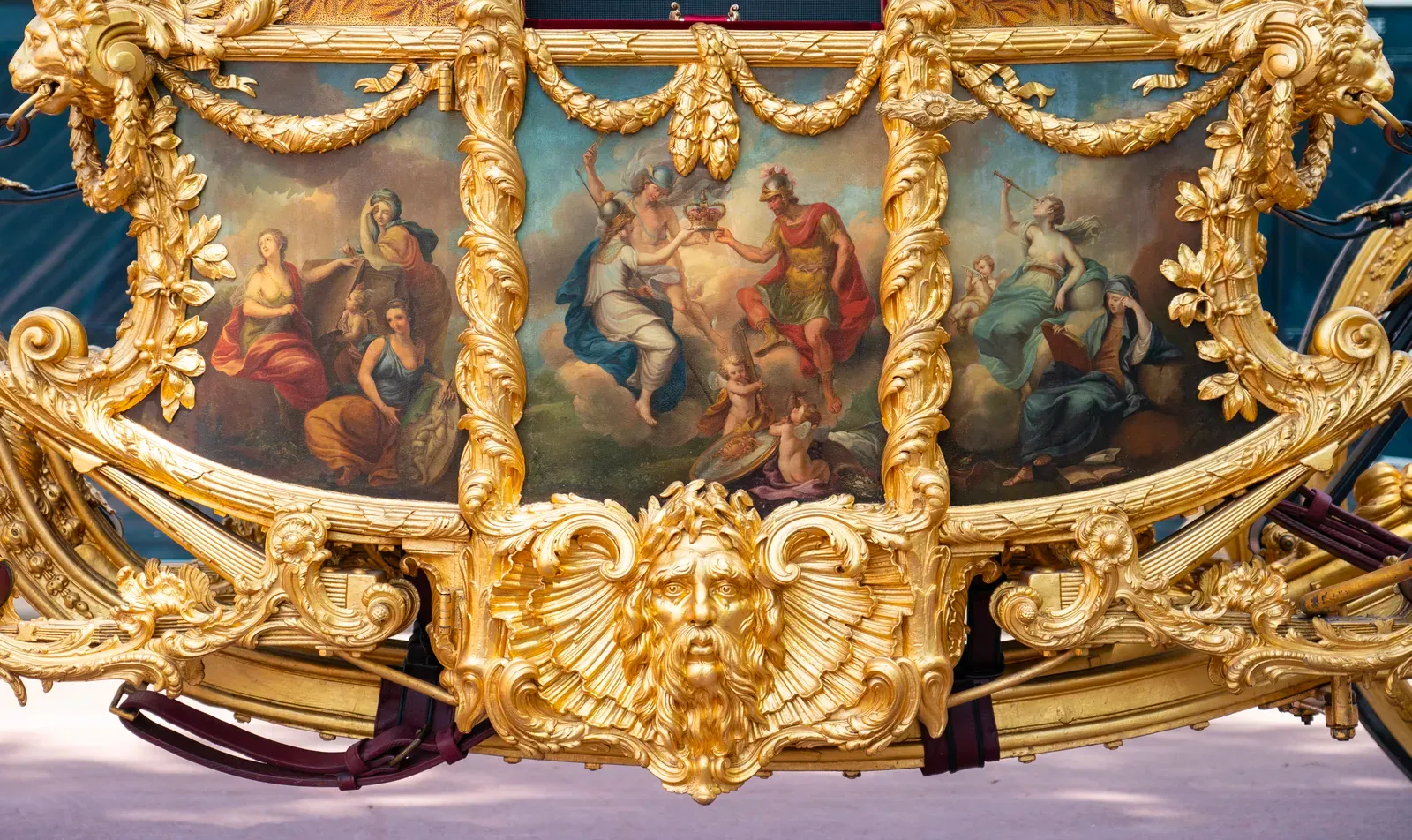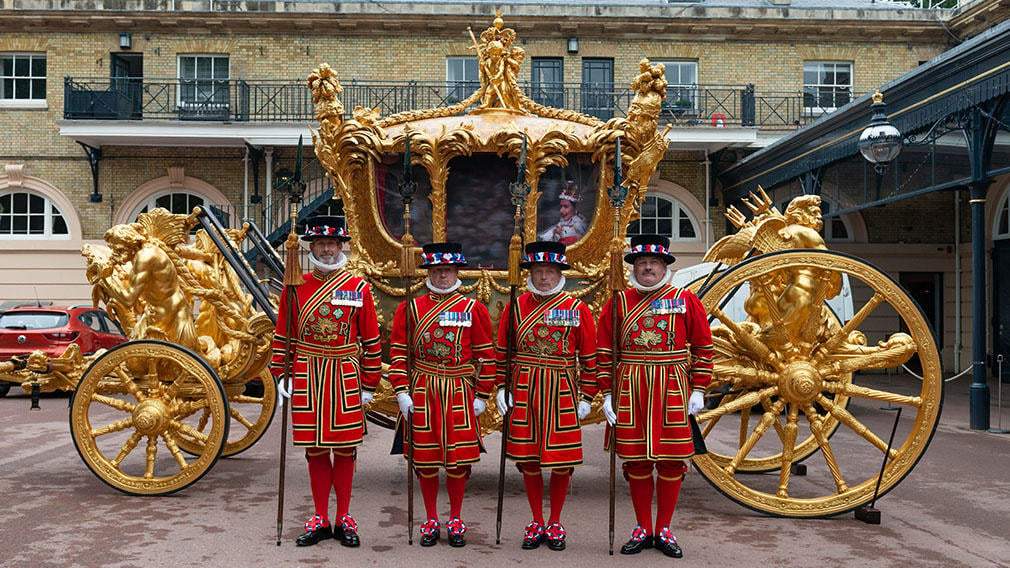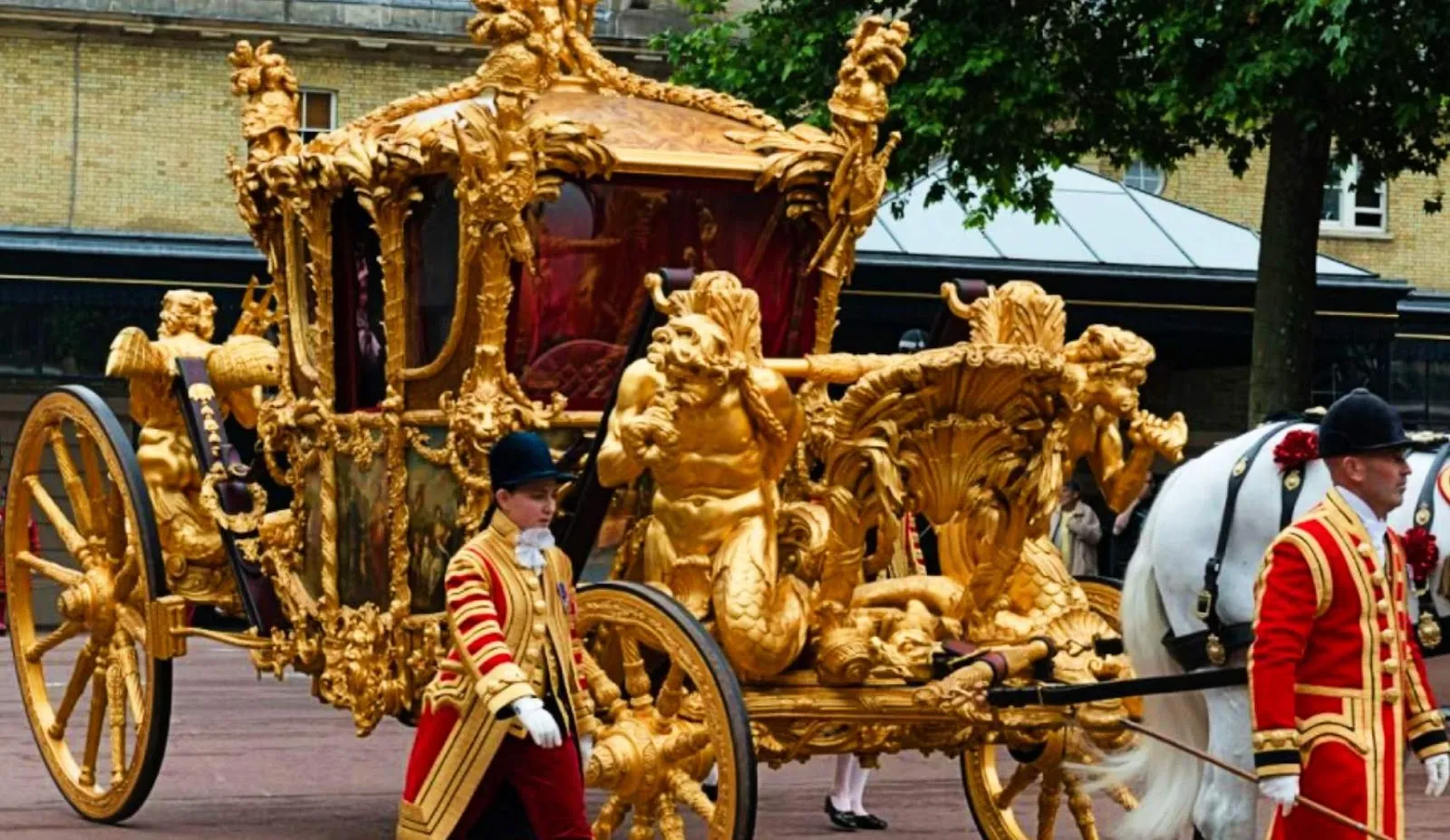5 Secrets of King Charles’ Coronation Gold State Coach
The iconic Gold State Coach selected to carry newly crowned King Charles and Queen Camilla back to Buckingham Palace following the Coronation has been used at every Coronation since William IV’s in 1831 as well as being a fixture at Royal jubilees and VIP events since it was built in 1762.
Don’t expect a smooth ride though. Queen Elizabeth II kept a hot water bottle under the coach seat on her Coronation Day in 1953 to keep the chill away and described riding in the coach as "horrible, it's not meant for traveling at all". While that might sound like the ultimate first-world problem, Her Majesty isn’t the only one to complain. King William IV described the coach ride as ‘tossing in a rough sea’ while Queen Victoria recalled the ‘distressing oscillation’.
Blimey. Here are five more secrets of the Royal ride:

1. The King’s Gold State Coach moves verrrrrry slowly
The Gold State Coach is a heavy carriage - four tons to be precise - and stretches to 29 feet long and 12 feet high. Even with eight horses pulling it, the coach only moves at a walking pace. The carriage was initially supposed to be ready for King George III's coronation in 1761, but delays meant it wasn’t used until November 25, 1762, when it transported George to the Opening of Parliament. Designed by William Chambers and made by the coachmaker Samuel Butler, the State Coach is managed by four postilions, nine walking grooms (one of whom walks behind the coach), six footmen, and four Yeoman of the Guard carrying their long partisans.

2. The Gold State Coach isn’t actually made of solid gold
The giltwood structure has a thin layer of gold leaf set over wood with a velvet and satin upholstered interior. each element featured on the structure bearing deep significance. On the main body of the Coach, there is gilded wood carved to represent palm trees, used to frame the doors and windows. It also features magnificent painted panels of Roman gods and goddesses and there are three cherubs on the roof, which represent England, Scotland, and Ireland. The iron wheels were rubberized after WWII.

3. The Gold State Coach was a Royal bargain when it was build in the 1760s
The complexity of the design and manufacturing process meant Sir William Chambers’ final design was still being discussed in summer 1762 but it was finally ready months later. The coach initially cost about £7,500 ($9,400) to build, with coach builder Samuel Butler paid just over $2,000, sculptor Joseph Wilton taking home about $3,000 and Italian painter G.B. Cipriani a mere $400. Today its value is estimated at more than $1.9m.
"The brand new social experience where you activate your gaming skills as you train like a spy."
- TimeOut
Take on thrilling, high-energy espionage challenges across different game zones.


4. The Gold State Coach is the third oldest surviving coach in the UK
There are only two older coaches in the UK - the Speaker of the House of Commons’ Coach is the oldest dating from 1698 and the Lord Mayor of London’s Coach was built in 1758. The King’s Yeomen of the Guard bodyguards - dressed in Tudor uniforms of red, white and yellow - play a ceremonial role during Royal events so expect to see them when the Gold State Coach rolls by. There are 73 Yeomen of the Guard, all former warrant or non-commissioned officers of the British Services. The Yeomen are the oldest of the Royal bodyguards and the oldest military corps in existence in Britain, created by Henry VII in 1485 after the battle of Bosworth.

5. Where does one park a Gold State Coach?
The Royal Mews, Buckingham Palace is home to historic Royal carriages as well as state cars (two Bentleys and three Rolls-Royces) used by Royals on official duties as well as Royal Review Vehicles (including two Range Rovers a State hearse, and a Royal Mews fleet) which are modified and designed for use at official parades, ceremonies, and other events. None of the vehicles have numbered license plates.
The Royal Mews is also responsible for all road travel arrangements for the King and members of the Royal Family, from horse-and-carriage to car and from livery to harness. In the case of King Charles, the 1.3 mile route following the Coronation ceremony involves the King and Queen Consort traveling from Westminster Abbey via Parliament Square, along Whitehall (known for its memorial statues and monuments), around Trafalgar Square, through Admiralty Arch and down The Mall back to Buckingham Palace.
SPYSCAPE+

Join now to get True Spies episodes early and ad-free every week, plus subscriber-only Debriefs and Q&As to bring you closer to your favorite spies and stories from the show. You’ll also get our exclusive series The Razumov Files and The Great James Bond Car Robbery!


Gadgets & Gifts
Explore a world of secrets together. Navigate through interactive exhibits and missions to discover your spy roles.
Your Spy Skills
We all have valuable spy skills - your mission is to discover yours. See if you have what it takes to be a secret agent, with our authentic spy skills evaluation* developed by a former Head of Training at British Intelligence. It's FREE so share & compare with friends now!
* Find more information about the scientific methods behind the evaluation here.


Stay Connected
Follow us for the latest
TIKTOK
INSTAGRAM
X
FACEBOOK
YOUTUBE